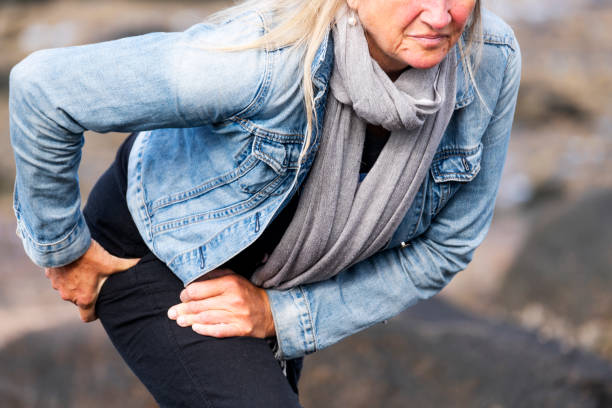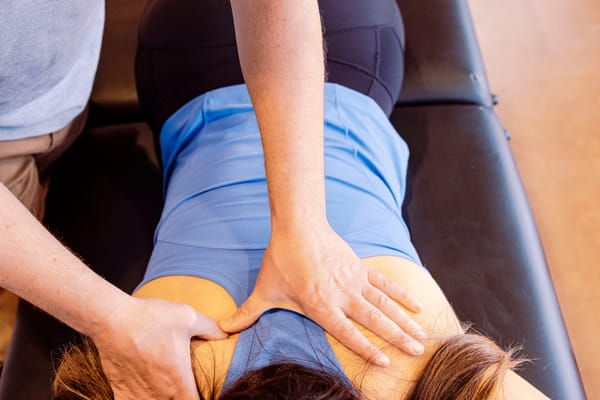
Bursitis Pain - Massage Austin
Bursitis is like a cushion that's lost its filler and can no longer soften the impact between your bones, muscles, and tendons.
Treating Bursitis with Specialized Techniques
The Iler Method® employs eight specialized techniques to treat bursitis pain. These clinical massage techniques efficiently and effectively target and relieve trigger points and adhesions that cause tightness and discomfort around the inflamed joint.
Elbow: Provides deep, precise pressure to posterior muscles and stubborn trigger points.
Open Palm: Covers larger areas with consistent pressure, ideal for broad muscle groups.
Ridge of the Forearm: Sustained pressure softens dense tissue, reducing stiffness.
Knuckles: Applies firm pressure to specific points for precise pain relief.

Thumb Over Thumb: Multiplies downward force to reach deeper knots that are otherwise difficult to access.
Hand and Fingers Over Fingers: Amplifies finger sensitivity for targeted neck and muscle tension relief.
Straight Fingers: Pinpoints fine trigger points and adhesions in narrow muscle spaces.
Ring and Middle Finger Together: Separates and addresses deep muscle layers that require structural stability.
These techniques relieve muscle tightness, reduce joint tension, and restore movement, alleviating and managing bursitis pain.
What is Bursitis?
Bursitis is like a cushion that's lost its filler and can no longer soften the impact between your bones, muscles, and tendons. The tiny, fluid-filled sacs known as bursae, which act as shock absorbers for your joints, become swollen and irritated, turning what should be a smooth glide into an uncomfortable or even painful experience. As these cushions deflate, the friction in your joints increases, making each movement feel strained and challenging.
This lack of cushioning primarily occurs in high-traffic areas like the shoulder, elbow, hip, and knee—joints that are always in use and subjected to constant bending, twisting, and pressure. Without their usual padding, these joints are more vulnerable to wear and tear, making routine tasks uncomfortable.
It can help alleviate this pain by easing tension around the affected area and reducing inflammation. This promotes healing, enabling the bursae to regain their cushioning ability. As a result, your joints can move freely and comfortably again.

Causes of Bursitis
- Repetitive Movements: Activities that involve repeated motions or excessive pressure on joints, such as throwing a ball or lifting heavy objects, can irritate the bursae.
- Prolonged Pressure: Leaning on elbows or kneeling for long periods can compress the bursae, leading to inflammation.
- Injury or Trauma: A sudden impact or fall can cause immediate swelling of the bursae.
- Infection: Certain bursae near the skin's surface can become infected, especially from cuts or puncture wounds.
- Underlying Health Conditions: Arthritis, gout, or diabetes can increase the likelihood of bursitis due to inflammation or infection.
- Age: The risk of bursitis increases as older bursae are more prone to irritation.
Symptoms of Bursitis
Bursitis often disrupts daily life, impacting one's ability to function smoothly. At Iler Method, we use specialized trigger point techniques to alleviate these symptoms so one can return to what they love.
Understanding the common issues associated with this condition is essential for recognizing and managing the inflammation in the bursae, allowing for timely relief and recovery.

- Pain: A sharp or aching pain typically develops near the, intensifying with movement or even light pressure, making everyday activities uncomfortable or challenging.
- Swelling: The joint area often becomes visibly swollen, and the skin may feel warm to the touch due to increased inflammation and fluid accumulation in the bursae.
- Stiffness: Limited joint movement can make bending or straightening difficult, making the joint stiff and unable to flex fully.
- Redness: The skin over the inflamed bursae often appears reddened, irritated, and sensitive, signaling underlying inflammation.
- Tenderness: Even gentle pressure on the inflamed joint can cause discomfort or sharp pain, discouraging movement and increasing sensitivity.
The Role of Joints and Bursitis -
Understanding the role of joints is crucial in understanding how bursitis can develop, particularly when muscles on one side of the body are overcompensating due to an imbalance. Overcompensation constantly stresses these joints and can become prone to injuries.
When the body's weight shifts to one side, the joints on that side must handle increased tension, forming trigger points and adhesions. Trigger points are like knots that develop in muscles to absorb the extra stress, while adhesions form to limit movement and prevent injury. However, this protective mechanism is not sustainable.
Over time, tight muscles and joints worsen, leading to joint, muscle, or even nerve pain. Joints may suffer wear and tear without proper treatment, causing bursitis or other joint issues that make movement difficult and painful.
By considering factors such as the severity of the condition and targeting the root causes of overcompensation and imbalance, the Iler Method effectively addresses the underlying issues, promoting healing and improving overall function for individuals affected by joint pain and bursitis.
Final Thoughts: Bursitis Pain - Massage Austin
Managing bursitis involves carefully addressing inflamed joints by relieving painful trigger points in surrounding muscles. Addressing joints helps reduce inflammation, alleviate joint stress, and restore flexibility, ensuring smoother, pain-free movement and minimizing further deterioration. Iler Method ® uses clinical massage that prioritizes efficiency and effectiveness so clients can safely return to their daily activities.
Iler Method® bursitis treatments restore movement and promote a healthier, more active lifestyle. We expedite healing and optimize outcomes, particularly for those experiencing chronic pain. Our priority is identifying and addressing the issues to offer targeted relief and reduce and enhance overall well-being.
Disclaimer -
Please note that at Iler Method® Therapy, we specialize in related techniques. All clients must understand that we are not medical professionals, and our services should not be seen as a substitute for medical advice, diagnosis, or treatment. Our practices support and complement your, but they do not replace professional medical consultation when needed.




